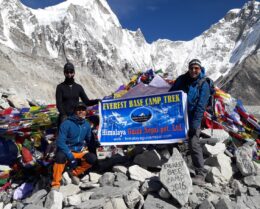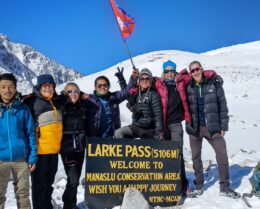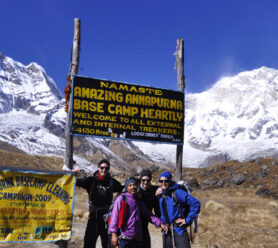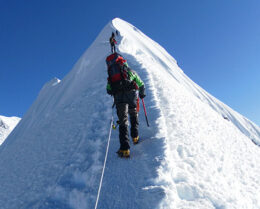Annapurna Circuit Trek Gear Guide for Beginners
UPDATED ON 15 April, 2024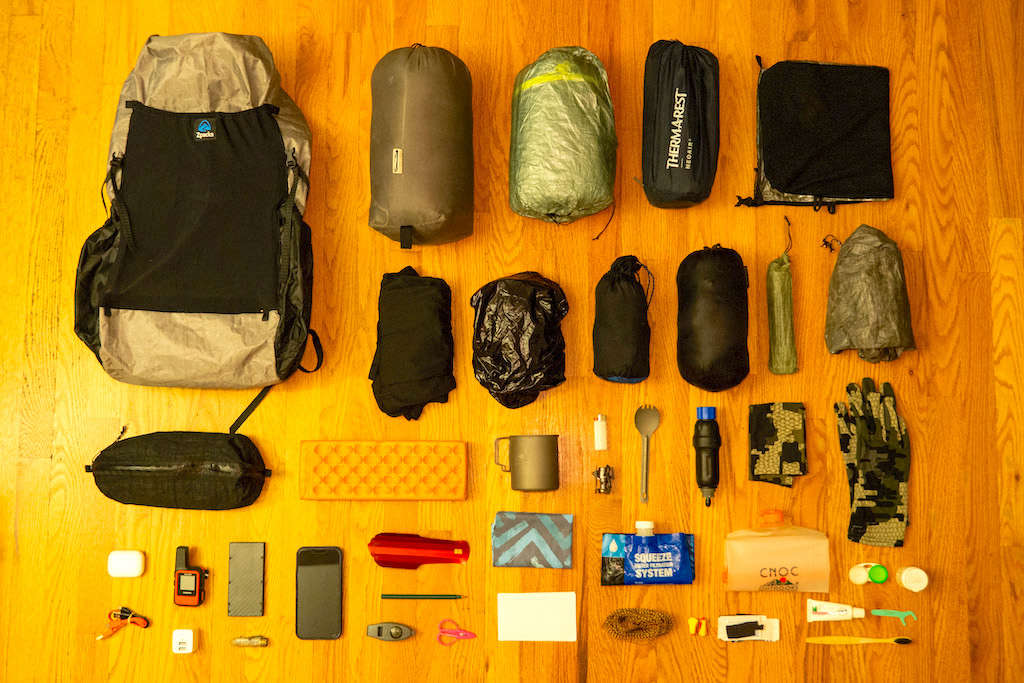
Embarking on the Annapurna Circuit trek is a thrilling adventure. Moreover, it takes you through stunning landscapes, picturesque villages, and challenging terrains. As a beginner, it’s crucial to be well-prepared with the right gear to ensure a safe and enjoyable experience. Therefore, in this comprehensive gear guide, we will explore the essential pieces of gear you need for the Annapurna Circuit trek, along with helpful tips to make your journey a success.
Overview
The Annapurna Circuit Trek is a renowned adventure. It takes trekkers through the stunning landscapes and picturesque villages of the Annapurna region in Nepal. As a beginner, it’s crucial to have the right gear to ensure a safe and enjoyable experience.
This gear guide provides essential information on the pieces of gear you need, along with tips on trekking season, acclimatization, permits, and hiring local guides. By being well-prepared, you can embark on this awe-inspiring journey, reaching the highest point at Thorong La Pass and creating memorable memories along the Annapurna Circuit trek.
Understanding the Annapurna Circuit Trek

The Annapurna Circuit is one of the most popular and breathtaking treks in Nepal. Furthermore, this scenic trek encircles the Annapurna massif, reaching a maximum altitude of 5,416 meters at Thorong La Pass.
Additionally, the route spans around 230 kilometers and typically takes about 15 to 20 days to complete. However, it depends on your pace and acclimatization needs.
Trekking Season and Weather Considerations
Before diving into the gear essentials, it’s essential to understand the trekking season and weather patterns in the Annapurna region.
The best times to go trekking are from March to May in the spring and from September to November in the fall, when the weather is generally steady and the scenery is breathtaking. However, be prepared for occasional rain and colder temperatures at higher altitudes.
Essential Gear for the Annapurna Circuit Trek
Here are the key pieces of gear you need to pack for a successful Annapurna Circuit trek:
- Trekking Boots: Invest in sturdy, comfortable, and waterproof trekking boots with ankle support to navigate the varied terrains encountered on the trail.
- Backpack: Opt for a spacious backpack with good support and padding to carry your gear. Make sure it has a rain cover to protect your belongings during unexpected showers.
- Clothing Layers: Dressing in layers is crucial to adapt to changing weather conditions. Pack moisture-wicking base layers, lightweight and breathable trekking pants, fleece jackets, a waterproof shell, and a down jacket for colder nights.
- Sleeping Bag: Choose a high-quality sleeping bag suitable for cold temperatures, as temperatures can drop significantly at higher altitudes. Ensure that it is lightweight and compact enough to fit in your backpack.
- Trekking Poles: Trekking poles provide stability and support on steep ascents and descents, reducing strain on your knees. They are particularly useful during the challenging sections of the trek.
- Headlamp: A reliable headlamp is essential for navigating the trails during early morning starts or in low-light conditions. Remember to pack extra batteries.
- Water Purification System: As potable water may not be readily available, carry a water purification system such as water purification tablets or a water filter bottle to ensure a safe drinking supply.
- First Aid Kit: Prepare a comprehensive first aid kit that includes bandages, blister treatment, pain relievers, altitude sickness medication, and any personal medications you may need. Get familiar with the fundamentals of first aid.
Here’s a more comprehensive gear guide to help you prepare for the Annapurna Circuit Trek:
Clothing:
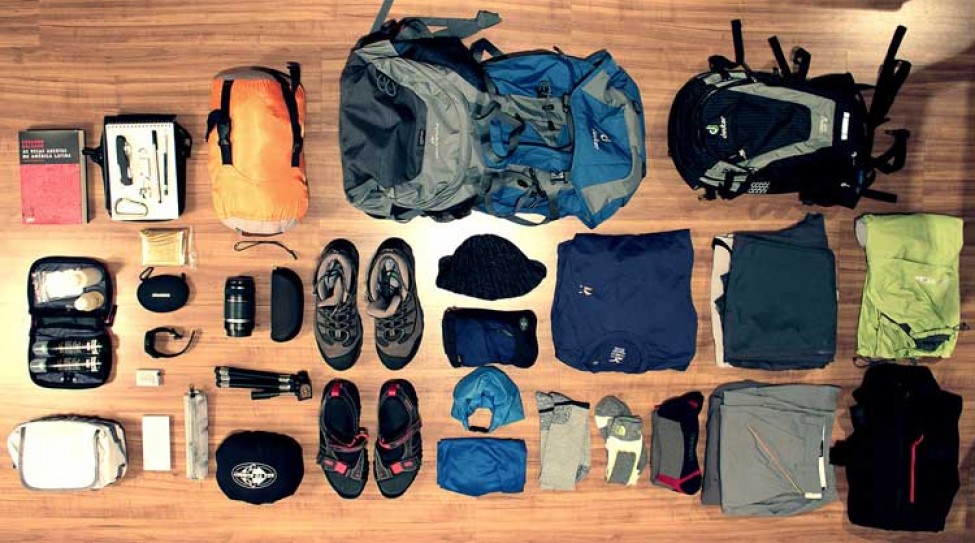
- Moisture-wicking and breathable base layers (long-sleeved tops and pants)
- Insulating layers (fleece or down jacket)
- Waterproof and windproof outer shell jacket
- Waterproof and breathable pants
- Quick-drying hiking trousers
- T-shirts and hiking shirts
- Warm hat and gloves
- Sun hat or cap
- Good quality hiking socks
- Hiking boots (broken in before the trek)
- Gaiters (optional but useful for snow or muddy conditions)
- Sandals or lightweight shoes for evenings in lodges
Equipment:

- Backpack (40-60 liters) with a rain cover
- Sleeping bag suitable for cold temperatures (rated for at least -10°C)
- Sleeping pad or inflatable mattress
- Trekking poles for added stability
- Headlamp with spare batteries
- Water bottle or hydration bladder
- Sunglasses with UV protection
- Trekking towel
- Lightweight and quick-drying travel towel
Accessories:

- Sunscreen (high SPF)
- Lip balm with SPF
- Insect repellent
- Personal toiletries and medications
- First aid kit (including blister treatments and any necessary prescription medications)
- Snacks and energy bars
- Water purification tablets or a filter
- Trekking map and compass (or GPS device)
Permits and Documentation
To trek in the Annapurna region, you’ll need to obtain two permits: the Annapurna Conservation Area Permit (ACAP) and the Trekkers’ Information Management System (TIMS) card.
These permits are available in Kathmandu or Pokhara and require valid identification and passport-sized photos. Make sure to keep these permits with you at all times during the trek.
Altitude Sickness and Acclimatization
Altitude sickness is a real concern during high-altitude treks like the Annapurna Circuit. It’s essential to acclimatize properly to minimize the risk. Firstly, plan for acclimatization days in villages like Manang and Thorong Phedi, allowing your body to adjust to the increasing altitude.
In addition, it is important to avoid drinking alcohol, drink plenty of water, and pay attention to your body. Furthermore, if symptoms of altitude sickness persist or worsen, it is crucial to descend to lower altitudes immediately and seek medical help if necessary.
Hiring Local Guides and Porters
Consider hiring a local guide and/or porter to enhance your trekking experience. Local guides are knowledgeable about the trail, culture, and can provide valuable insights. Porters can help alleviate the physical strain of carrying a heavy backpack, allowing you to enjoy the trek more fully.
Side Trips and Attractions
While hiking the Annapurna Circuit, you have the opportunity to explore some remarkable side trips and attractions. The Annapurna Sanctuary and Tilicho Lake are breathtaking destinations that offer incredible views and a chance to immerse yourself in the natural beauty of the region.
Additionally, the trek from Muktinath to Tatopani is a scenic route with hot springs where you can rejuvenate after long days of hiking.
What will you come across in this trek?
During the Annapurna Circuit trek, you will come across:
- breathtaking views of the Annapurna, Dhaulagiri, and Machhapuchre peaks, which are all covered in snow.
- Charming villages and settlements such as Manang, Jomsom, and Marpha. You can immerse yourself in the local culture and interact with friendly locals.
- The magnificent Annapurna Sanctuary is an unmanicured amphitheater encircled by mighty mountains.
- Tilicho Lake, one of the highest lakes in the world, is known for its pristine beauty and turquoise waters.
- The challenging Thorong La Pass, standing at an elevation of 5,416 meters, offers panoramic views and a sense of achievement.
- The diverse landscapes range from lush forests and terraced fields to arid desert-like valleys.
- Traditional Buddhist monasteries and Hindu temples showcase the religious and cultural heritage of the region.
- Natural hot springs in Tatopani, where you can relax and soothe your muscles after long days of trekking.
- Waterfalls, rivers, and suspension bridges add excitement and scenic beauty to the trekking trail.
- Varied flora and fauna, including rhododendron forests, and pine forests, and chances to spot wildlife such as Himalayan Thar, langur monkeys, and various bird species.
- Local tea houses and lodges where you can rest, enjoy warm meals, and interact with fellow trekkers from around the world. This creates lifelong friendships.
The Annapurna Circuit trek offers a unique blend of natural beauty, cultural experiences, and personal challenges. This makes it an unforgettable journey for trekkers of all levels.
FAQs of Gear for the Annapurna Circuit trek
Here are five FAQs specifically related to trekking gear for the Annapurna Circuit trek:
What are the essential gear items I need for the Annapurna Circuit trek?
The essential gear items for the trek include trekking boots, a backpack, clothing layers, a sleeping bag, trekking poles, a headlamp, a water purification system, and a first aid kit.
What kind of boots should I choose for the Annapurna Circuit trek?
Invest in sturdy, comfortable, and waterproof trekking boots with ankle support to navigate the varied terrains encountered on the trail.
How do I dress in layers for the trek?
Layer your clothing so that it can adapt to changing weather conditions. Pack moisture-wicking base layers, lightweight and breathable trekking pants, fleece jackets, a waterproof shell, and a down jacket for colder nights.
Do I need a sleeping bag for the Annapurna Circuit trek?
Yes, it is crucial to have a high-quality sleeping bag suitable for cold temperatures, as temperatures can drop significantly at higher altitudes. Ensure that it is lightweight and compact enough to fit in your backpack.
What kind of first aid items should I pack for the trek?
Prepare a comprehensive first aid kit that includes bandages, blister treatment, pain relievers, altitude sickness medication, and any personal medications you may need. familiarize yourself with the fundamentals of first aid.
You may also like:
- Annapurna Two Passes Trek
- Mardi Himal Trek
- Annapurna Base Camp Trek With A Visit To Hot Water Spring In Jhinu Danda
- Best Time For Annapurna Circuit Trek
Conclusion
In conclusion, The Annapurna Circuit trek is an unforgettable adventure that challenges and rewards trekkers with its stunning landscapes and rich cultural experiences. Moreover, by packing the right gear, understanding the trekking season, and taking necessary precautions, beginners can embark on this journey with confidence.
Additionally, it is important to remember to acclimatize properly, respect the local culture, and prioritize safety throughout your trek. Prepare well, enjoy the journey, and create memories that will last a lifetime on the Annapurna Circuit trek.

